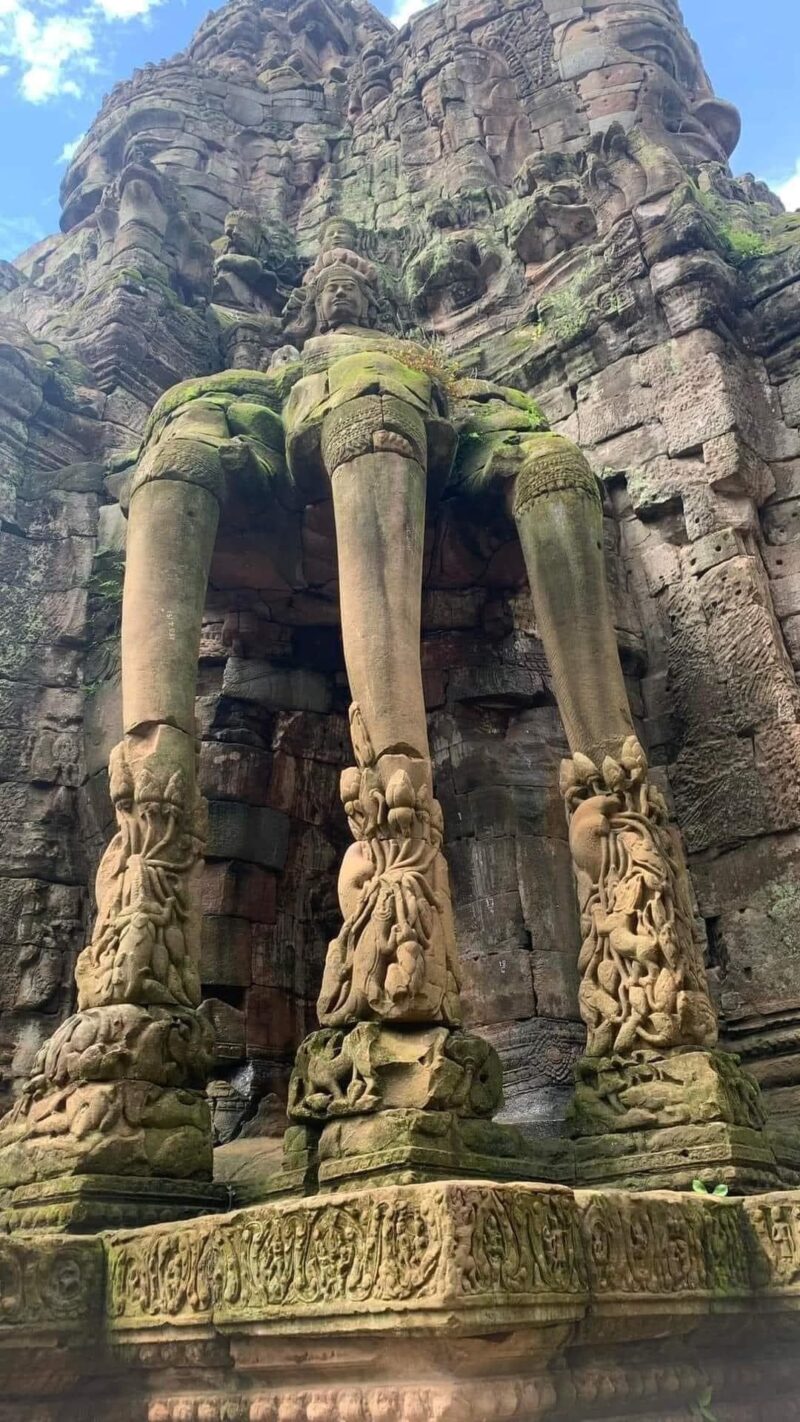Angkor Thom, the last great capital of the Khmer Empire, is surrounded by an impressive 8-meter high wall that stretches for 12 kilometers. This massive fortification is punctuated by five monumental gates, each serving as a grand entrance to the ancient city.
The gates of Angkor Thom were constructed in the late 12th century under the reign of King Jayavarman VII. Each gate is topped by four giant faces, believed to represent the Bodhisattva Avalokiteshvara, looking out in the cardinal directions. These serene faces have become iconic symbols of Angkor’s architecture.
The five gates are positioned as follows:
- The South Gate: The most popular and best-preserved entrance.
- The North Gate
- The West Gate
- The East Gate
- The Victory Gate: An additional eastern gate leading to the Royal Palace area.
Each gate is approached by a causeway spanning the surrounding moat. These causeways are flanked by a row of 54 stone figures on each side, depicting gods on the left and demons on the right. The figures are shown holding a naga (serpent) in a scene reminiscent of the mythical Churning of the Ocean of Milk.
The gates themselves are impressive structures, rising 23 meters high and 3.5 meters wide. The central tower of each gate is topped by the four faces, while the base is decorated with elaborate carvings of elephants and their mahouts (drivers).
Today, the South Gate remains the primary entrance for most visitors to Angkor Thom, offering a dramatic introduction to the wonders that lie within the ancient city walls.










